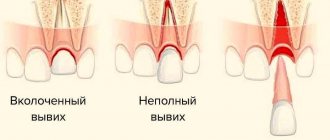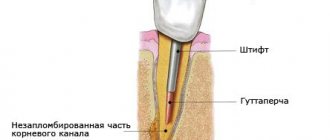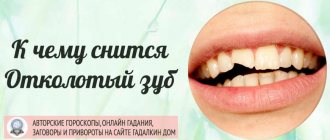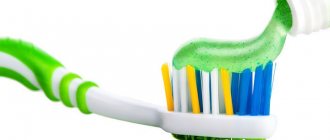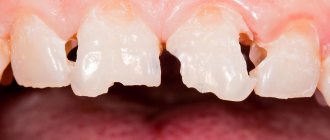Transparency of enamel: figuring out what is normal and what is pathology
It is considered a physiological norm when the cutting edges of the front teeth in adults and children are slightly transparent at the tips, because there is no underlying dentin in these areas1. At the same time, with age, the degree of transparency increases more and more due to grinding of the enamel, its abrasion, wear and thinning. However, if the teeth at one point acquired an unhealthy shine and literally became glassy, or their color changed (usually, dentin, which has a greyish, yellow, milky or brownish tint, begins to show through through the worn-off enamel), then this already indicates a pathological condition requiring consultation with a doctor.
Important! Transparent baby teeth in a child should be a reason to visit a dentist. When the phenomenon is present not only at the ends, but reaches the middle of the coronal part, this may indicate the development of a disease such as hypoplasia.
What to do if your teeth become transparent? Causes of thinning enamel and ways to restore it
When there are no signs of a pathological process and the integrity of the crowns is not compromised, and the teeth have become transparent, there is a reason to consult a specialist. There are many reasons for this phenomenon, and it is impossible to do without professional diagnostics. As a rule, such an anomaly indicates severe thinning of the enamel. Often in such cases, hyperesthesia occurs, that is, increased sensitivity. So why do teeth become transparent and what to do about it - read more about this later in this article.
When enamel transparency is a sign of dental problems
Some experts assure: if the teeth are transparent at the ends, this does not always indicate a physiological norm; it may indicate the beginning of development or the presence of serious diseases and dental problems, which without treatment will lead to rapid abrasion and destruction of tissue. This symptom can appear with malocclusion pathologies, bruxism, fluorosis, and hypoplasia.
Carefully! Transparency of enamel may be one of the characteristic signs of pathological tissue abrasion. The pathology occurs in 12% of adults and can lead to dentin exposure, serious disruption of the aesthetics of a smile, dysfunction of the maxillofacial apparatus and diseases of the temporomandibular joint.
Causes of Unhealthy Transparency
The enamel becomes transparent because its thickness decreases. This happens under the influence of various factors. So, let’s look at why the teeth became transparent:
- lack of calcium, phosphorus and fluorine in the body: poor nutrition, living in environmentally unfavorable areas can contribute to this,
- improper oral hygiene technique and the use of hygiene products that are not suitable specifically for you: the problem is sooner or later faced by people who constantly injure hard tissues with hard brushes, abrasive pastes, sudden and chaotic movements during brushing,
- abuse of whitening procedures: in pursuit of a snow-white smile, many forget that any whitening agent (even professional) is quite aggressive,
- consumption of foods containing a lot of sugar and acid, love of carbonated drinks, freshly squeezed juices in large quantities,
- gastrointestinal diseases that increase acidity: for example, gastritis, heartburn,
- accumulation of a large amount of bacterial plaque: if deposits are not removed in a timely manner, then, firstly, they prevent the saturation of the enamel with oxygen. Secondly, microorganisms multiply in them, which literally corrode and demineralize hard tissues,
- taking antibiotics and drugs of the tetracycline group,
- mechanical injuries and bad habits: for example, opening bottles with teeth, chewing seeds,
- smoking.
Heredity may also be to blame for the fact that you have this pathology.
Veneers: contraindications
When you can’t put veneers on your teeth - reviews from dentists indicate that breakage of veneers (which will require their replacement, with associated costs) is most likely in the presence of the following conditions:
- increased tooth wear of grade 2 and higher,
- absence of chewing teeth (sixth, seventh),
- extreme lifestyle (boxing and other contact sports),
- presence of bruxism,
- bad habits - biting threads or nails, opening beer with teeth,
- You cannot install veneers on teeth treated with resorcinol-formalin,
- severe destruction of the lingual (inner) surface of the tooth,
- the presence of a medium or large filling on the lingual surface of the tooth,
- incorrect bite (direct or reverse).
Why is pathology dangerous?
If the tooth enamel has become transparent due to the factors listed above, then this condition is dangerous. And even if you don’t notice any external problems, except aesthetic ones, now, this does not mean that they will not appear in the near future. With this phenomenon, the fragility of hard tissues increases and their susceptibility to any type of impact: mechanical damage, infection. Thus, a tooth under slight load or pressure can unexpectedly break, chip, or cracks may appear on it. Or he will very quickly be affected by caries, which progresses to pulpitis or periodontitis.
The sensitivity of teeth to the temperature of food also increases: they can begin to ache from cold or hot. The reaction can occur to sour, sweet, salty foods.
Experts note that the pathology most often occurs in middle-aged patients between 30 and 50 years old. The problem can develop for a very long time, over 10-15 years. If it is not dealt with, then a person runs the risk that the enamel layer of the teeth will be erased or worn out completely, and open areas of dentin will appear, which will make the smile unattractive and cause pain.
How much does it cost to install veneers - price in Moscow
If you want to get what is called a Hollywood smile, you only need ceramic veneers, which will be made by an orthopedic dentist and dental technician of the highest qualifications, and from very high-quality ceramic mass. For such dental veneers, the cost in economy class clinics will start from 16,000 rubles, and in mid-price clinics - from 21,000 rubles (for 1 unit).
Of course, there is a much cheaper alternative in the form of composite veneers, which are made from a composite filling material directly in the patient’s mouth, in just 1 visit. The price for composite veneers for front teeth will be on average about 7000-9000 rubles (for 1 unit), and their minimum price in Moscow is from 4500 rubles. As for ceramic veneers, the price will depend on the type of ceramics used...
Ceramic veneers: cost for 2021
- from feldspathic ceramics (porcelain) – from 16,000 rubles.
- made of glass ceramics E.max PRESS – from RUB 21,000.
- from glass ceramics E.max CAD – from RUB 26,000.
- from zirconium dioxide - about 30,000 rubles.
Important: above we indicated how much dental veneers cost in Moscow - specifically in clinics in the mid-price segment. In different clinics there is a very wide range in prices for veneers, even made from the same materials. For example, the average price for 1 veneer from E.max PRESS should be about 21,000 rubles. However, in economy class clinics it can be only 16,000 rubles, and in others it can even reach 50,000 rubles.
When discussing the price with your doctor, it will be important to clarify whether they have a discount for the amount of work (if you do veneers on several teeth at once). When using veneers for 4-6 teeth, you can usually get a discount of up to 10-15%. We will immediately warn you that you should not look for clinics with the lowest prices. The latter will guarantee that your veneers will be done by an orthopedic dentist and a dental technician - not of the highest qualifications.
Methods to combat the problem
What to do if you have transparent teeth? The best decision is to go to a dentist. Most often, experts suggest a series of strengthening procedures. It’s even better to carry them out on an ongoing basis, namely, every six months or even more often (up to 3-4 times a year according to indications). If the problem is more serious, and it is no longer possible to cope with tissue strengthening alone, then doctors offer various methods of prosthetics.
So, we list the main methods that dentists offer to correct the situation.
Simple and deep fluoridation
The enamel is transparent due to the fact that it thins and becomes more fragile due to demineralization. Therefore, the first thing dentists suggest doing to solve the problem is to saturate it with useful substances and microelements, due to which its strength will increase, it will become thicker and stronger, and its protective properties will increase. Fluoride-based preparations help with this, with the help of which you can carry out both simple and deep fluoridation.
In addition, fluoridated compounds can stop or slow down the process of leaching calcium from hard tissues; they neutralize harmful bacteria found in the oral cavity. Another advantage of the procedure is that before it, most clinics will definitely carry out professional cleaning of the oral cavity from hard and soft bacterial plaque, which can contribute to the deterioration of the properties and qualities of the enamel, causing caries, gingivitis and other dental diseases.
“You should not use fluoride products at home. Firstly, it is unsafe; fluoride, if used irrationally or incorrectly, can harm the mucous membranes, teeth and the entire body. Secondly, before applying any useful strengthening composition, the enamel must be prepared so that it becomes more receptive and receives maximum benefit. To do this, before the fluoridation or remineralization procedure, you need to have your teeth cleaned of plaque and tartar,” says E.V. Valova, dental hygienist.
Course of remineralizing procedures
Teeth become transparent, but you don’t know how to correct the situation? It is possible to restore and strengthen hard tissues not only through fluoridation, but also through remineralization. In essence, these two procedures are very similar, but the products used to treat enamel differ in their composition.
Remineralizing gels contain not only fluoride, which strengthens and protects, but also other useful components that restore the balance of nutrients in hard tissues: vitamins and minerals, calcium, phosphorus and magnesium. It will be better if the drug is prescribed by a doctor based on the clinical situation.
The best effect is achieved by a course consisting of 7-14 procedures, during which remineralizing gel applications are performed. It is best if the product is first placed in trays specially made for teeth. The procedures can be carried out at home, but only after consultation with a specialist.
On a note! Today there are a large number of remineralizing preparations, pastes and gels. Some of them can be used at home. Some of the more affordable and high-quality pastes include ROCS Medical Minerals and Active Calcium pastes. Expensive, but quite effective - Tooth Mousse (it is suitable for both children and adults). For children, you can also buy Splat Junior foam with milk enzymes; it can be used from the age of 3 years.
Enamel implantation
We are sure that before this you only heard about dental implantation, but in fact today there is also such a procedure as enamel implantation. It is carried out if there are demineralized areas, hypersensitivity of hard tissues, superficial caries, and cracks in the enamel.
The procedure involves applying specialized products with a synthetic composition to the surface of the teeth. For example, InnoDent - the drug is successfully used both in children in the Junior series and in adults in the Repair series. These products trigger the process of natural regeneration of living tissues. After application, they are embedded at the molecular level into the enamel and dentin. Within a month after use, the appearance of teeth is transformed, damaged areas are restored, the strength of living tissues and their protective properties are enhanced.
Composite restorations
In cases where the defect greatly spoils the external aesthetics of the smile, and the patient also has other complaints about the tooth enamel, in addition to increased transparency, doctors can offer you a solution to the problem using more drastic methods.
The most budget option is composite building or installation of therapeutic veneers. The specialist will perform the procedure in one visit, right in your mouth. The service life of such artistic restoration is insignificant - 2-5 years. But you will get rid of problems in a comprehensive manner and will be able to correct minor flaws in your smile: slight curvature, color, hide chips and cracks.
Veneering/lumineering
For those who want their smile to be like new not for 2-3 years, but much longer, it is better to choose ceramic veneers or original lumineers to hide external defects and the transparency of the enamel. Their service life is 10 years or more. In addition, thin linings will protect against increased sensitivity, temperature changes and discomfort, caries, and the appearance of cracks and chips.
Prosthetics with crowns
This option is the most extreme. For those whose process has gone too far, the enamel is worn away and the teeth begin to rapidly deteriorate. Crowns made from various materials will help recreate a natural look, correct anatomical shape, restore chewing function and your desire to smile openly at others.
Glass ceramic veneers E.max –
As we said above, ceramic materials for making veneers include not only porcelain and zirconium dioxide, but also glass ceramics E.max (). Today, this is the best option for making veneers, which combines the stunning aesthetics of porcelain veneers and high strength.
E.max is not just ceramics, it is glass ceramics. This material consists of translucent lithium disilicate crystals (i.e., it has a glass matrix, which in its optical properties is as similar as possible to real tooth enamel). In the hands of a qualified dental technician, E.max glass ceramics will give you the Hollywood smile of famous actors and music performers.
E.max veneers for front teeth: before and after photos
Emax veneers can be made from 2 varieties of this material - either from the “E.max PRESS” material or from the “E.max CAD” material. If you want to put veneers on your teeth, the price of E.max can vary greatly in different clinics, not only because of different pricing policies, but also because of the use of different E.max materials. How these materials differ – read below.
- Veneers from E.max PRESS (Fig. 10-11) – E.max PRESS glass ceramics are designed for the production of veneers/crowns using injection molding, which makes them very strong (flexural strength 400 MPa).
From this material you can make not only standard veneers with a thickness of 0.6 mm, but also so-called “thin veneers” - only 0.3-0.4 mm thick. Thin veneers require either minimal grinding of the enamel on the front surface of the tooth, or sometimes they can be installed without disturbing the enamel at all. Moreover, the small thickness does not affect their strength. A special feature of E.max PRESS is a wide range of color shades and a choice of the degree of transparency of the material, which allows the dental technician to make ideal veneers from this material.
- Veneers from E.max CAD (Fig. 12) – E.max CAD material is produced in the form of blocks intended for milling veneers/crowns on a CEREC program-controlled machine.
This technology is called CAD/CAM. By the way, exactly the same manufacturing method is used for zirconium dioxide veneers. The strength of veneers made from E.max CAD is about 360 MPa, which is also very good. Veneers made from E.max CAD are more expensive simply because their production requires very expensive equipment. As for aesthetics, E.max PRESS is a little better. This is due to the fact that E.max CAD has fewer options for selecting color shades and degrees of transparency of the material. As a result, there is a higher risk of mismatch between the veneers and the teeth adjacent to them - in color and transparency. And, by the way, thin veneers cannot be made from this material.
Important: we already wrote above how much veneers for the front teeth made of E.max glass ceramics cost. This is on average from 21,000 rubles for 1 veneer from E.max PRESS, and from 26,000 rubles from E.max CAD. Both materials are good, but you can safely choose the less expensive E.max pressed ceramic without worrying about its quality being inferior.
